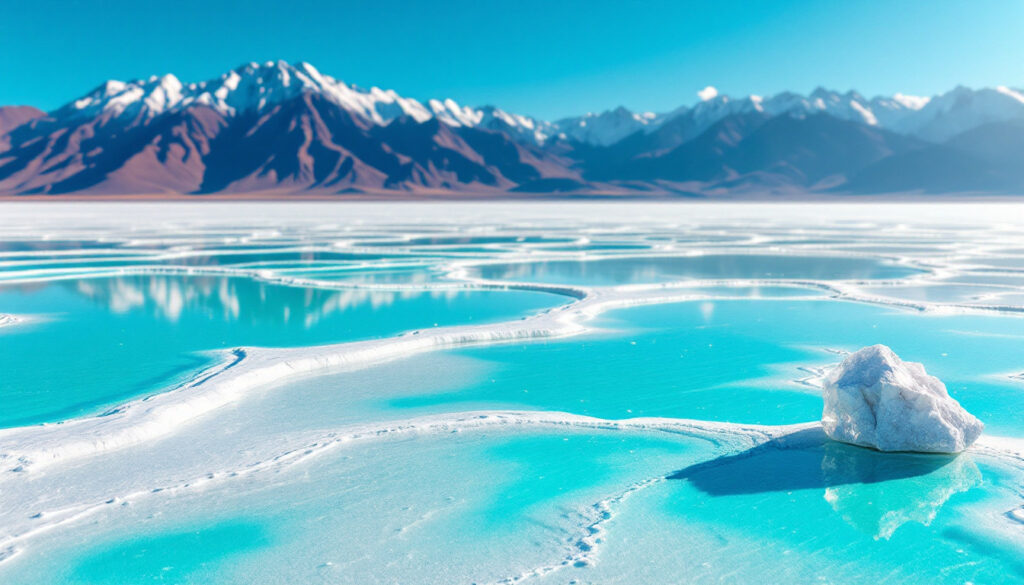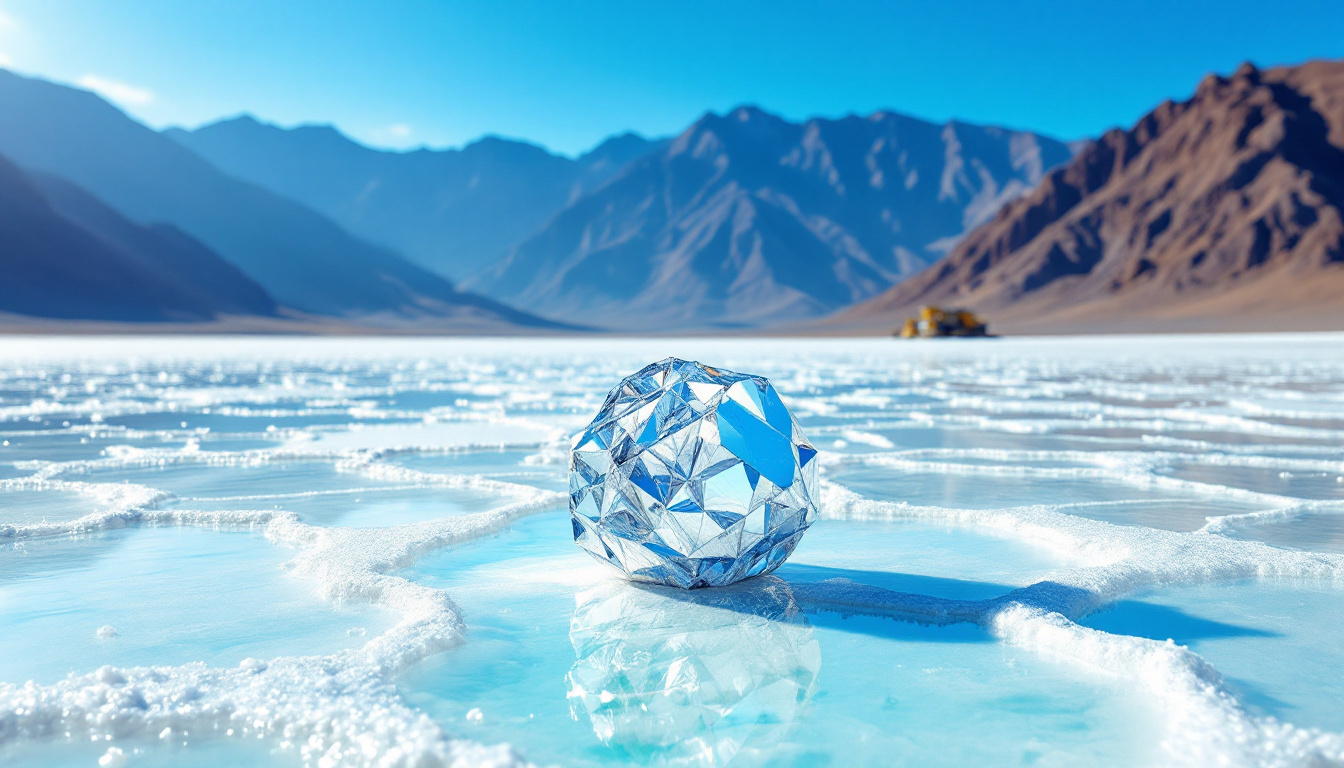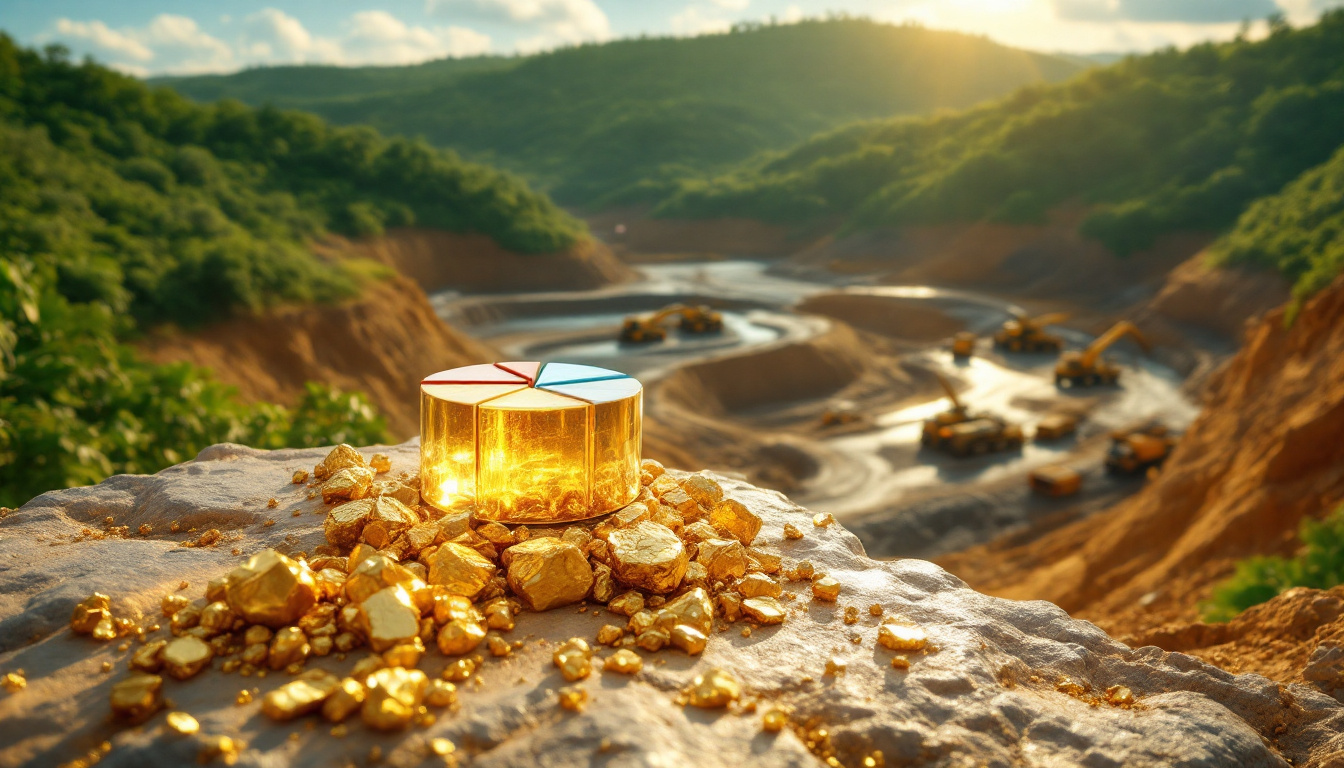How Does Lithium Mining Work Around the World?
Lithium isn't simply a commodity but a specialty chemical that requires complex extraction and processing methods. With 58% of the world's lithium reserves found in brines, understanding the different types of lithium projects explained is essential for evaluating investment opportunities in this critical battery material. The growing demand for electric vehicles has placed lithium at the center of the global energy transition, creating a unique market dynamic that differentiates it from traditional mining operations.
Unlike copper or gold mining, lithium extraction varies dramatically between regions and deposit types. This variability creates both challenges and opportunities for investors looking to capitalize on the rapidly expanding lithium market.
What Are Lithium Brines and How Are They Processed?
Lithium brines are underground accumulations of saline groundwater enriched with dissolved lithium that have collected over millions of years. The famous "Lithium Triangle" spanning Chile, Bolivia, and Argentina hosts 75% of the world's lithium brine reserves under its salt flats (salars). These brines formed through a complex geological process where volcanic activity released lithium into water that subsequently accumulated in basins with minimal outflow.
What makes these reserves particularly valuable is their concentration – high-quality brine deposits like those in Chile's Atacama Salar can contain lithium concentrations of 1,000-2,000 parts per million (ppm), significantly higher than average deposits elsewhere in the world.
How Do Evaporation Ponds Extract Lithium?
The traditional method involves pumping mineral-rich liquid from underground salt beds into large evaporation ponds where solar evaporation removes water, leaving lithium salts behind. These salts are then processed to create lithium carbonate and further refined into lithium hydroxide for batteries.
This process typically requires a series of 10-15 sequential ponds covering vast areas of land. The brine passes through each pond over months, with lithium concentration gradually increasing as other minerals like magnesium, calcium, and boron precipitate out.
Benefits:
- Lower production costs (approximately $3,000-4,000 per tonne)
- Well-understood, proven extraction process with decades of implementation
- Established commercial processing infrastructure in producing regions
- Simple technological requirements compared to hard rock mining
Drawbacks:
- Long processing times (6-12 months from extraction to finished product)
- Large land requirements (thousands of acres for evaporation ponds)
- Inefficient processing (typically processes 500,000 litres of brine to produce 1 tonne of lithium)
- Limited to dry, arid conditions with high evaporation rates
- Produces lithium carbonate that requires further processing for battery-grade materials
- Significant water consumption in already water-stressed regions
What Is Direct Lithium Extraction (DLE)?
DLE technologies extract lithium directly from brines without evaporation ponds using methods such as:
- Absorption using specialized materials that selectively capture lithium ions
- Ion-exchange processes similar to water softening technologies
- Solvent extraction using chemical solutions that separate lithium
- Membrane filtration systems that isolate lithium from other elements
DLE represents the cutting edge of lithium production technology, with companies like Standard Lithium and Lake Resources leading innovation in this space. The potential for revolutionizing lithium production through innovative pegmatite processing has attracted significant investor attention, though commercial-scale operations remain limited.
Benefits:
- Much lower costs (potentially below $2,500 per tonne at scale)
- Significantly faster processing times (hours or days versus months)
- Works in various climatic conditions, not just arid regions
- Environmentally friendly closed-loop system that returns 95%+ of brine to aquifers
- Higher recovery rates (potentially 80-90% versus 40-50% for evaporation)
- Smaller physical footprint with minimal land disturbance
Drawbacks:
- Commercially unproven technology with various methods still being tested
- High energy requirements compared to evaporation
- Technical challenges in scaling laboratory success to industrial production
- Initial capital expenditure may be higher than traditional methods
How Does Hard Rock Lithium Mining Work?
Australia leads global production of hard rock lithium, which comes primarily from two mineral types found in pegmatites (coarse-grained igneous rocks). Hard rock mining currently accounts for approximately 60% of global lithium production, demonstrating its commercial importance despite higher production costs.
What Is Spodumene Lithium?
Spodumene is the preferred lithium mineral for economic discoveries, with viable projects typically showing grades above 1%. For context, the world's most profitable hard rock lithium project (Greenbushes in Western Australia) produces lithium with grades between 2-3%, making it exceptionally valuable by industry standards.
The mining process involves conventional drill and blast techniques followed by crushing and concentration through dense media separation or flotation. The concentrated spodumene (typically 6% Li₂O) then undergoes conversion to lithium hydroxide or carbonate through a process involving roasting, leaching, and purification steps.
What Are Lithium Micas?
Micas are more common than spodumene but typically contain lower lithium grades (0.1-0.5%). These "low-grade" deposits require significantly more chemical inputs during processing compared to spodumene. Processing technology for micas is primarily developed in China and remains somewhat mysterious to Western producers.
Zinnwaldite and lepidolite are the primary lithium-bearing micas of commercial interest. Their complex mineralogy presents processing challenges, but deposits are often larger and potentially longer-lived than spodumene projects if economically viable extraction methods can be implemented.
Benefits of Hard Rock Projects:
- Conventional mining methods are well understood and established
- Established processing methods with predictable outputs
- Not dependent on weather conditions or evaporation rates
- Generally faster time to market than brine projects
- More flexible in terms of production scaling and output adjustment
Drawbacks:
- Higher exploration risk with significant capital requirements
- Larger production costs ($5,000-$7,000 per tonne)
- Environmental concerns including landscape disruption and waste management
- Energy-intensive processing with higher carbon footprint
- Limited by grade constraints and geological distribution
How Do You Evaluate Different Lithium Projects?
What Makes a Good Lithium Brine Project?
Four key factors determine the merits of a lithium brine project:
-
Lithium content – higher content means less brine needed for processing. Elite projects exceed 1,000mg/L, while economic projects typically need at least 250mg/L.
-
Brine flow ability (porosity) – less dense rocks allow better flow and extraction rates. Ideal aquifers have porosity exceeding 10% and high permeability.
-
Evaporation rate – faster evaporation means smaller pond requirements and quicker processing. The Atacama Desert's evaporation rate of 3,500mm annually makes it ideal.
-
Presence of contaminants – fewer contaminants like magnesium reduce processing costs significantly. The magnesium-to-lithium ratio should ideally be below 6:1 for economic viability.
Location plays a crucial role as well, with proximity to infrastructure, political stability, and regulatory frameworks significantly impacting project economics. Water rights and environmental permitting are increasingly critical factors in development timelines.
What Makes a Good DLE Project?
DLE projects are technology plays rather than exploration plays. Evaluation focuses on:
- Processing recovery rates from pilot plants (successful projects demonstrate >80% recovery)
- Technology proven through scientific testing and scaling beyond laboratory conditions
- Quality of the technical team and their experience with similar extraction challenges
- Access to adequate brine resources with suitable chemistry for the specific DLE technology
- Energy requirements and access to renewable power sources to maintain cost advantages
The most promising DLE operations demonstrate the ability to operate continuously for extended periods without degradation in performance or unexpected maintenance issues. Some companies are even pioneering lithium extraction from oilfield brine to diversify lithium sources.
What Makes a Good Hard Rock Lithium Project?
Key evaluation factors include:
- Grade and size of the deposit (higher grade spodumene preferred, with 1.5%+ being excellent)
- Mining-friendly jurisdictions (like Australia, Canada, and select African nations)
- Processing requirements and costs, including energy and reagent availability
- Metallurgical characteristics affecting recovery rates (typically targeting >70%)
- Infrastructure access including transportation, power, and water
- Market timing relative to lithium price cycles and supply-demand dynamics
Investors should also consider the experience of management teams in delivering similar mining projects and their understanding of downstream conversion requirements.
How Will New Technologies Impact Lithium Supply?
While lithium prices remain at historic highs, emerging technologies could disrupt traditional production methods. If technologies like cost-effective mica processing or DLE prove successful at scale, they may fundamentally alter the economics of lithium production.
The potential to unlock previously uneconomic resources through technological innovation could substantially increase global lithium supplies. Some analysts predict that successful DLE implementation could potentially double global lithium resources by making low-concentration brines viable for extraction.
Clay deposits, particularly those in Nevada, represent another frontier for lithium production. Companies like Ioneer and Lithium Americas are developing extraction processes for clay-hosted lithium that could add significant new supply sources if successful. In addition, Rio Tinto's major lithium expansion project demonstrates the growing interest in developing various lithium resources.
Battery recycling technologies are also advancing rapidly, with the potential to recover up to 95% of lithium from spent batteries. By 2030, recycled lithium could potentially supply 10-15% of global demand, creating a circular economy component to the lithium supply chain.
What Are the Key Risks for Each Lithium Project Type?
Each lithium project type carries distinct risks:
-
Brine projects: Weather dependency, long timeframes (3-7 years to production), large land requirements, and increasing water usage concerns. Environmental opposition and indigenous rights issues have delayed several major projects in South America.
-
DLE projects: Unproven technology at commercial scale, higher energy requirements, and technical challenges in maintaining extraction efficiency over time. The capital markets may be skeptical until multiple commercial operations prove successful.
-
Hard rock projects: Exploration risk, higher production costs, energy intensity, and waste management challenges. Future pricing concerns could threaten profitability if production costs remain significantly higher than brine or DLE methods.
Additionally, all lithium projects face regulatory risks as governments increasingly view lithium as a strategic resource. Countries like Mexico, Chile, and Bolivia have moved to nationalize lithium resources or implement restrictive development policies that impact investor returns. Understanding these complexities is crucial when navigating lithium market trends and policy challenges in the industry.
Frequently Asked Questions About Lithium Projects
What forms is lithium traded in?
Lithium is tradeable in three main formats: lithium carbonate, lithium hydroxide, and lithium chloride. However, resources are typically measured in lithium carbonate equivalent (LCE), which is processed into lithium hydroxide (LiOH) for high-nickel battery cathodes used in electric vehicles. The price premium for battery-grade lithium hydroxide over carbonate has ranged from 10-25% in recent years.
Why is lithium demand increasing?
As the world pursues sustainability goals, electric vehicle demand is rising, driving increased need for lithium in batteries. A typical electric vehicle requires approximately 8-10kg of lithium, and global EV production is forecast to grow from 6.5 million units in 2021 to over 40 million by 2030. Additionally, grid-scale energy storage systems are increasingly utilizing lithium batteries, creating another major demand center.
Which countries lead lithium production?
Australia's evolving lithium ambitions and future challenges have positioned it as the leader in hard rock lithium production (approximately 55% of global supply), while Chile, Argentina and Bolivia contain most of the world's brine resources in the "Lithium Triangle" (approximately 60% of known reserves). China dominates lithium processing, converting raw materials into battery-grade chemicals, controlling roughly 60% of global lithium refining capacity.
What grades make a viable lithium project?
For hard rock projects, grades above 1% are desirable for greenfield exploration, with world-class deposits showing 2-3% grades. For brine projects, concentrations above 250mg/L can be economic in favorable conditions, while premier projects exceed 1,000mg/L. According to lithium extraction methods explained by industry experts, DLE technologies aim to make concentrations as low as 100mg/L economically viable, potentially unlocking vast new resources previously considered sub-economic.
Ready to Discover the Next Major Mineral Opportunity?
Stay ahead of the market with real-time alerts on significant ASX mineral discoveries through Discovery Alert's proprietary Discovery IQ model, which transforms complex mineral data into actionable insights. Explore why historic discoveries can generate substantial returns by visiting Discovery Alert's dedicated discoveries page and begin your 30-day free trial today.




